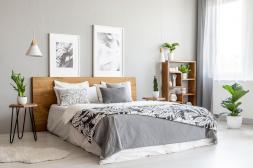How Using Plants as Room Dividers Can Transform Your Living Space

Incorporating plants into your living space is a fantastic way to bring life and vibrancy to your home. One particularly creative and functional method is using plants as room dividers. This approach not only adds natural beauty but also helps define areas within an open floor plan, enhancing privacy and improving air quality.
Benefits of Using Plants as Room Dividers
Plants as room dividers offer multiple benefits beyond just aesthetics. They create a natural partition that can soften the look of sharp corners or large, empty spaces. Additionally, plants improve indoor air quality by absorbing toxins and releasing oxygen, contributing to a healthier environment. The presence of greenery has also been shown to reduce stress and increase productivity, making them ideal for both homes and offices.
Choosing the Right Plants for Dividing Spaces
Selecting suitable plants is crucial when using them as room dividers. Tall and bushy plants like fiddle leaf figs, bamboo palms, or rubber trees work well for creating visual barriers. Alternatively, trailing plants such as pothos or string of pearls can be used in hanging pots or shelves to add layers to the divider while maintaining openness. Consider factors like lighting conditions, maintenance needs, and growth habits when making your choice.
Creative Ways to Arrange Plant Dividers
There are numerous ways to arrange plant dividers depending on your space and style preferences. You could use a series of potted plants lined up closely together or incorporate vertical garden walls with various plant species for texture diversity. Placing plants on multi-tiered shelves allows you to maximize space while creating an artistic display that functions as a divider.
Maintenance Tips for Healthy Plant Dividers
To keep your plant room dividers thriving, regular care is essential. Ensure they receive adequate light according to their needs—some prefer bright indirect light while others tolerate low light conditions better. Watering should be consistent but not excessive; overwatering can lead to root rot. Regularly dust leaves for optimal photosynthesis and prune any dead foliage to maintain neatness.
Incorporating Plant Dividers into Different Interior Styles
Plant dividers can complement various interior design styles seamlessly—from modern minimalism with sleek pots in monochromatic tones to bohemian spaces featuring eclectic planters and wild greenery arrangements. They can also soften industrial interiors by adding organic shapes amid metal and concrete elements or enhance rustic decor with wooden planters filled with lush foliage.
Using plants as room dividers is an innovative way to transform your living space by combining functionality with natural beauty. With thoughtful selection, creative arrangement, and proper maintenance, plant partitions can redefine how you experience different areas within your home while bringing numerous health benefits along the way.
This text was generated using a large language model, and select text has been reviewed and moderated for purposes such as readability.


